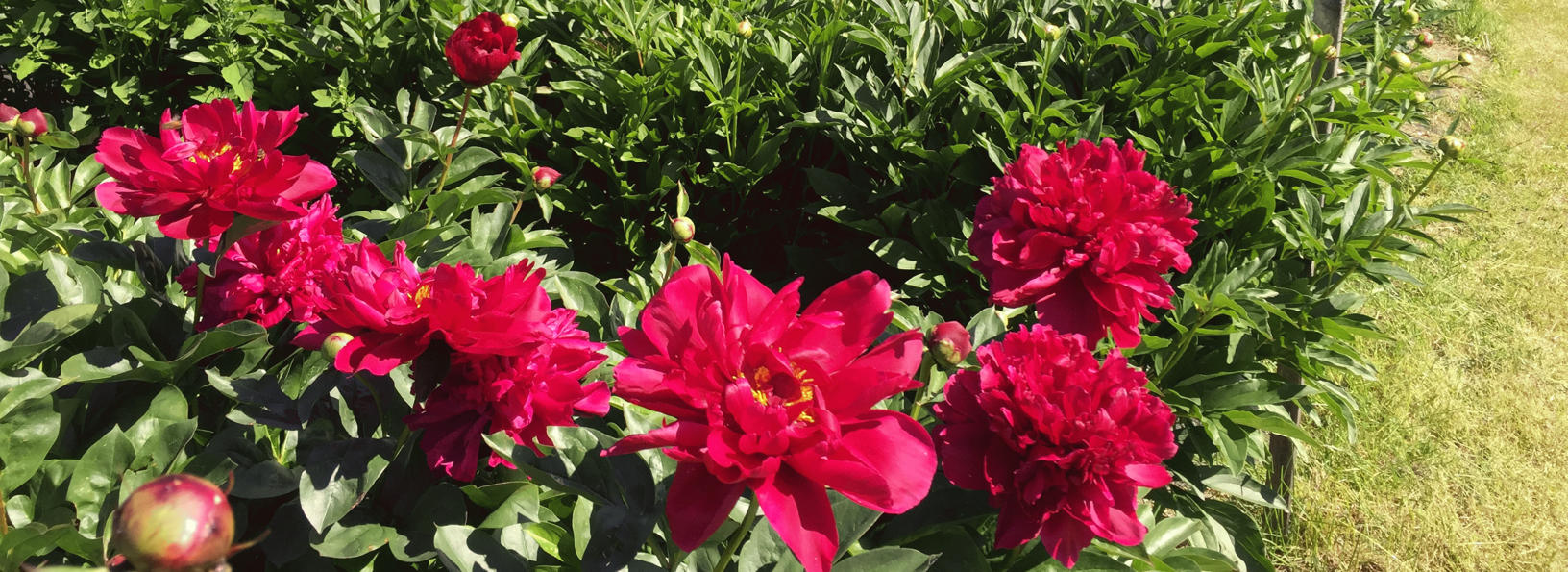Common Insect Pests
Thrips
Thrips are one of the more common plant pests, and recent research has been looking at thrips pests of peonies in Alaska. Thrips are very small — most are less than 1/20 inch long as adults — slender insects with fringed wings and can vary in color from light yellow to black. Some thrips species feed on plants, while others are predators of other small arthropods. Plant-feeding thrips are a concern because they can cause considerable bud damage, may vector plant diseases, and may pose a threat for exports. Damage from thrips can be the result of feeding or egg laying. Thrips feeding damage includes discoloration, deformation, and necrotic areas as a result of thrips puncturing the outer layer of plant tissue and sucking out the liquids. Thrips like to hide and do not like to be exposed. In peonies, they settle between the bracts and sepals or between sepals and petals of early stage buds. From these protected locations, thrips lay eggs and progressively move further into the bud as it opens. A thrips’ lifecycle is relatively short. Because of this, multiple generations can occur during a single growing season, impacting management efforts and treatment timing. For more information see Managing Thrips in Peony Crops.
Lygus Bugs
Peony growers in Alaska have been observing damage to developing buds, possibly as a result of lygus bug feeding. Two species of these bugs were identified from peonies in Alaska, Lygus borealis and Lygus punctatus. In general, Lygus species are oval-shaped, approximately ¼ inch long as adults, and green, brown or black in color. Immature lygus bugs (called nymphs) are light green and develop black spots and wing buds as they get older. Lygus bugs overwinter as adults in plant debris and emerge in the spring to feed and lay eggs. Damage caused by feeding may result in unmarketable buds, and plants infested with lygus eggs may fail phytosanitary inspections if identifications are not clear. It is currently thought that L. borealis and L. punctatus have only one generation per year in Alaska. For more information see Managing Lygus Bugs in Peony Crops.
Aphids
Aphids are small, oval to pear-shaped insects that are typically green in color but may also be pink, brown, or grey. Aphids may be winged or wingless. Aphids feed on plant liquids through their straw-like mouthparts which can potentially cause damage to developing peonies or vector plant diseases. Aphids typically are not an economically important pest of peony in Alaska however they do have the potential to cause economic damage at outbreak levels.
Work by Alberto Pantoja has identified the following aphids associated with peony in Alaska:
Macrosiphum euphorbiae, the potato aphid
Myzus persicae, the green peach aphid
Aphis spiraecola, the spirea aphid
